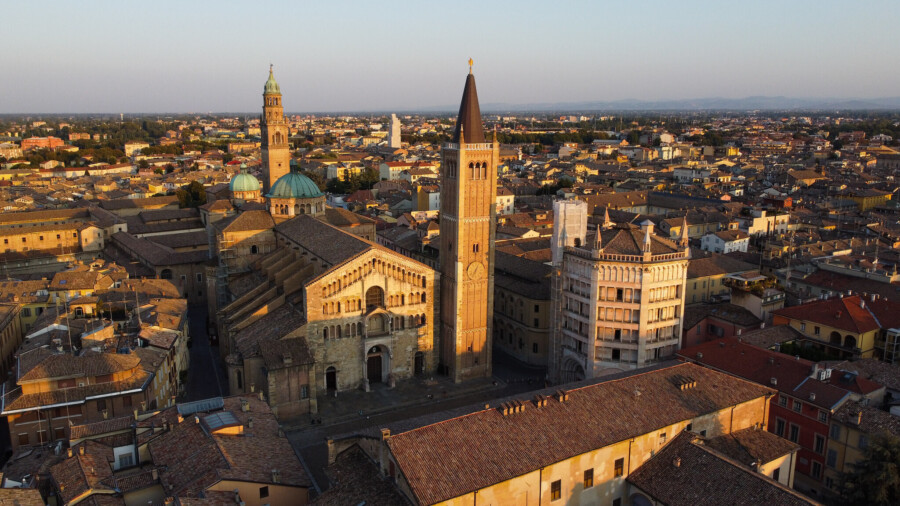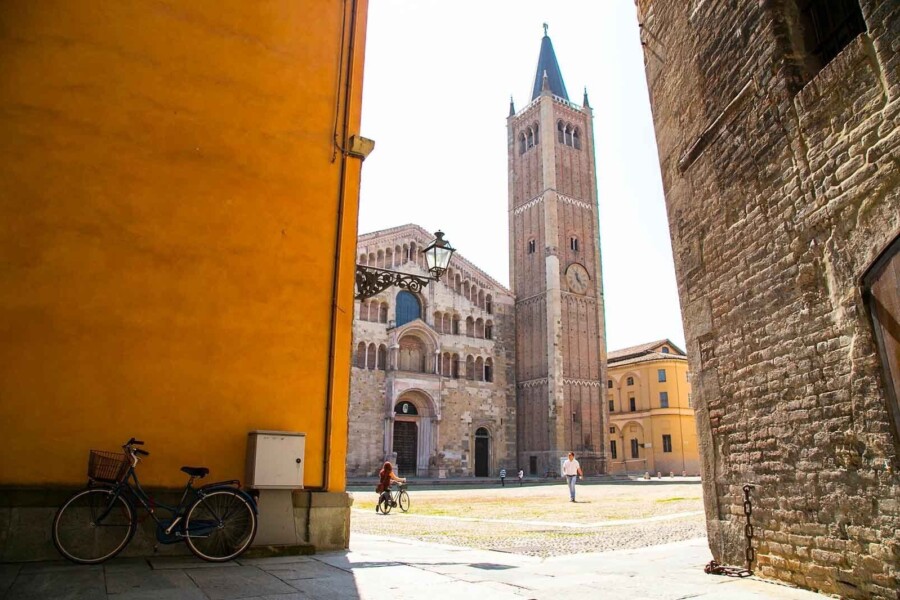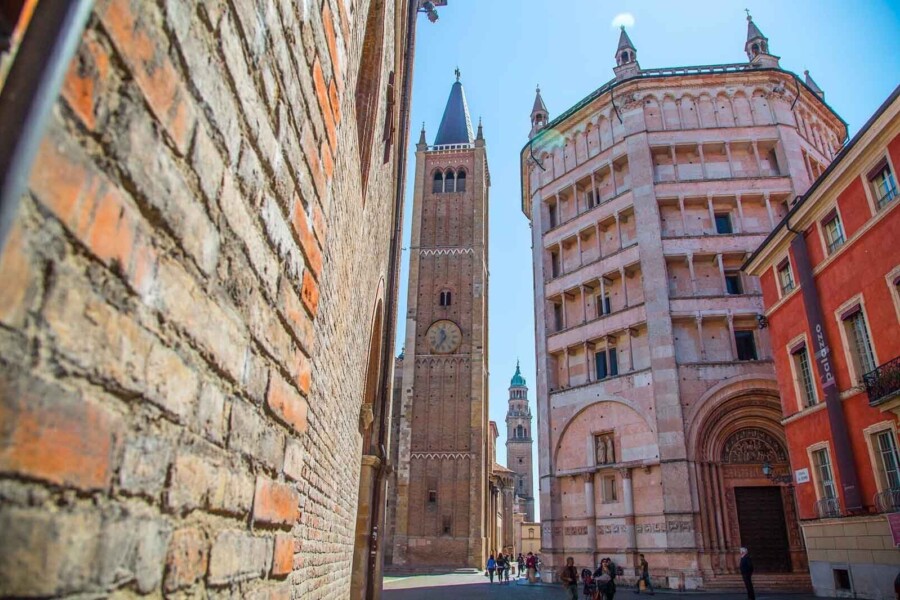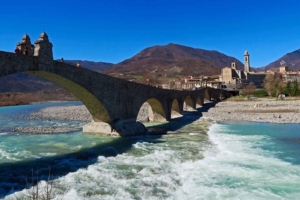Parma Cathedral: romanesque art and Correggio’s masterpiece

Parma Cathedral, known in Italian as Cattedrale di Santa Maria Assunta, stands as a testament to the rich tapestry of history, art, and spirituality woven into the city of Parma.
As one of the most significant churches in Parma, it offers visitors a profound glimpse into Romanesque architecture and the artistic masterpieces that adorn its sacred halls.
The history of Parma Cathedral
Origins and construction
The origins of Parma Cathedral date back to the 11th century.
Commissioned by Bishop Cadalus, who later became Antipope Honorius II, the cathedral was initially constructed to serve as a monumental place of worship for the growing Christian community in Parma.
The construction began in the early 1050s, reflecting the Romanesque architectural style prevalent during that era.
However, a devastating earthquake in 1117 caused significant damage to the structure, necessitating extensive reconstruction efforts that were completed by the mid-12th century.
Significant historical events
Throughout its history, Parma Cathedral has been the focal point of numerous significant events.
In 1106, it was consecrated by Pope Paschal II, marking its importance within the Catholic Church.
The cathedral also witnessed various political and religious transformations, including periods of restoration and artistic enhancement, particularly during the Renaissance when artists like Antonio da Correggio contributed to its interior magnificence.
For more insights check this post about what to do in Parma, including historical landmarks like the cathedral.

Architecture of Parma Cathedral
Parma Cathedral is a classic example of Romanesque architecture, though it has undergone modifications over time.Its sturdy exterior features intricate carvings, blind arcades, and a central rose window.
The adjoining bell tower, completed in 1294, rises 63 meters, dominating the city skyline.
Inside, the cathedral’s spacious nave is flanked by aisles separated by columns with elaborately carved capitals.
The richly decorated interior combines sculptural and painted details, reflecting the craftsmanship of the medieval and Renaissance eras.

Correggio’s Masterpiece: The Assumption of the Virgin
The jewel of Parma Cathedral is the dome fresco painted by Antonio da Correggio.
Titled The Assumption of the Virgin, this masterpiece, completed between 1526 and 1530, depicts Mary ascending to heaven surrounded by angels and saints.
Correggio’s pioneering use of perspective creates an illusion of soaring into the heavens, making this work one of the greatest achievements of the Italian Renaissance and arguably Correggio’s most famous piece.
The cathedral also houses other frescoes and sculptures, such as the intricately carved pulpit and choir stalls, all of which add to its artistic allure.
Antonio da Correggio
Antonio Allegri, known as Correggio, was born in the town of Correggio, a small settlement in northern Italy near Reggio Emilia and Parma. The painter adopted his nickname from his birthplace.
Correggio is primarily renowned for his dome frescoes in San Giovanni Evangelista and Parma Cathedral, as well as for a series of major altarpieces that solidified his reputation as one of the foremost painters of the Italian Renaissance.
Curiosities surrounding Parma Cathedral
Parma Cathedral is shrouded in various legends and anecdotes that add to its mystique. One such tale speaks of a hidden underground passage connecting the cathedral to other significant buildings in Parma, allegedly used during times of siege or conflict.
While no concrete evidence supports this legend, it continues to intrigue both locals and visitors alike.
Visiting Parma Cathedral: Hours and Costs
Is Parma Cathedral free?
Yes, entry is generally free, but groups must book in advance and pay 2 euros per person. The cathedral is open daily from 7:30 AM to 12:00 PM and from 3:00 PM to 7:30 PM.
Visitors are encouraged to check ahead for schedule changes during religious events.
Parma Cathedral is not just a place of worship but also a repository of art, history, and culture.
Whether you’re exploring its Romanesque architecture, marveling at Correggio’s frescoes, or learning about the legends that surround it, a visit to this iconic landmark is an unforgettable journey into the heart of Parma’s rich heritage.
Join our Parma food tour which starts in front of Parma cathedral and delves deep into the city's culinary and cultural highlights!
[Photo credits Città di Parma @Creative Commons]


